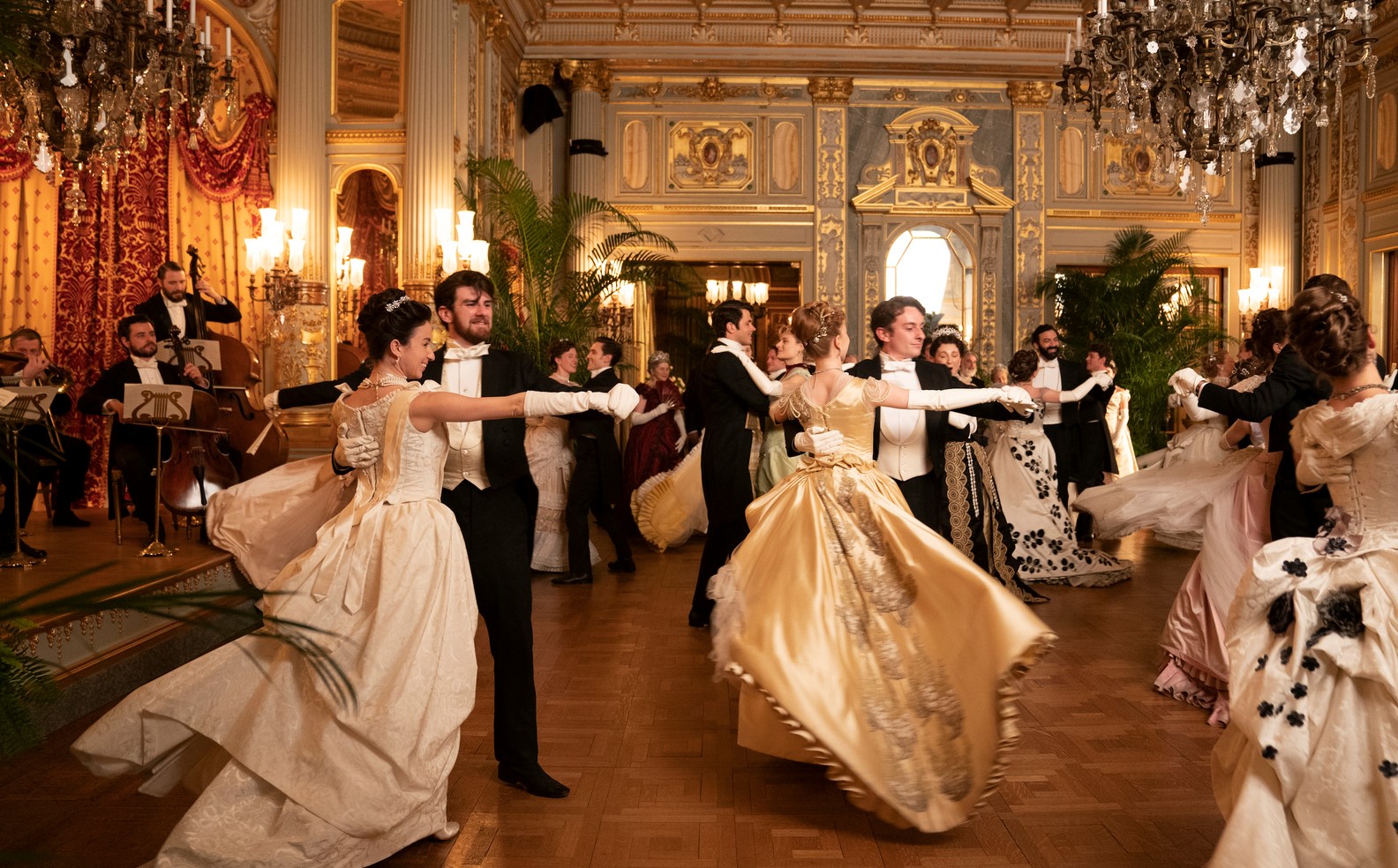When you call a show “The Gilded Age,” you sort of set expectations.
The first season (shown here) was lush; as the second one starts (9 p.m. Sunday, Oct. 29, on HBO), those expectations are raised. “It’s ‘How do you get bigger?’” Bob Shaw, the production designer, said in a virtual press forum.
Julian Fellowes, the show’s creator and producer, had an answer: You start the story on Easter Sunday.
After a quiky opening – lots of bonnets coming out of boxes and onto carefully coiffed heads – we see masses stroll down two avenues to the church. Kasia Walicka Maimone, the costume designer, recalls her reaction: “‘Oh my God, Julian is putting us through this incredible exercise.’”
It’s even more than Fellowes tried in his elegant “Downton Abbey” for PBS’ “Masterpiece Theatre.” Now a masterpiece mind has an HBO budget. “I knew I could write anything,” he said.
That Easter promenade, Maimone said, merely amplifies everyday life in the ritzier parts of 1882 New York. There “was a type of a fashion show on the streets, multiple times a day.”
But it was a show done with restraint, she said. People attempted to look elegant and gorgeous without diverting from the norms. “The highest compliment that could be paid to a woman was that you couldn’t recall what she was wearing the night before.”
Some went to an extreme: They bought the latest Paris fashions, then waited two years to wear them.
In the same way, Shaw said, houses sort of escaped notice. They could be spectacular on the inside, but were “not supposed to be showing off on the street.”
But “Gilded Age” is about more than frocks and homes. Fellowes has always liked the half-century before World War II, when life was ready to transform. “Trade unions, women’s rights, Marxism were all waiting in the wings.” he wrote in “The World of Downton Abbey” (St. Martin’s Press, 2011).
Now he starts a bit earlier. “The workers had no rights … They had no protections at all.”
These issues resonate with Sonja Warfield, another “Gilded Age” writer-producer. Her grandfather was a steelworker in Ohio; her dad is the same age Emmett Till would be now, if he hadn’t been lynched in Mississippi at 14. He often told her about Till and about Black history.
In this new season, Peggy will reach what was then the Tuskegee Normal School for Colored Teachers.
The school opened in Alabama in 1881, a time of “racism and horror,” Fellowes said, with 25-year-old Booker T. Washington in charge. It’s now Tuskegee University, with graduates who have changed the world – generals, politicians and college presidents, plus Ralph Ellison, Lionel Richie, Betty Shabazz, Keenan Wayans. Tom Joyner, the Tuskegee Airmen and the former prime minister of Ghana.
Back in the gilded world, there were other things to argue about – including the “opera war.”
For decades, the Academy of Music Opera House dominated New York society. But its best seating involved only 18 boxes. As Edith Wharton wrote in the opening of “The Age of Innocence” (set in the 1870s): “Conservatives cherished it for being small and inconvenient and thus keeping out the ‘new people’ whom New York was beginning to dread.”
Then those newcomers – including Morgans, Roosevelts and Vanderbilts – opened the elegant Met in 1883, with three tiers of boxes. The Academy soon gave up on opera.
The new-money industrialists might seem like heroes, but Fellowes resists. He points to the steel barons who turned the 1892 Homestead strike into deadly warfare. Henry Clay Frick “was a pretty terrible man” and Andrew Carnegie was “one of the toughest robber barons.”
Alongside this are the social maneuvers. The old-money side has Agnes (Christine Baranski); her son Oscar, who hopes to marry a rich woman and shield his homosexuality; and her sister Ada (Cynthia Nixon). New money includes Bertha (Carrie Coon), her husband and their naive daughter Gladys.
They can change a tad. “This season, (Ada) is a woman in love,” Maimone said, “but she’s still Ada.”
And we’re not talking Hallmark endings. “Don’t worry,” Warfield said. “There will still be heartbreak.”

A gilded age adds glitter and anger
When you call a show “The Gilded Age,” you sort of set expectations.
The first season (shown here) was lush; as the second one starts (9 p.m. Sunday, Oct. 29, on HBO), those expectations are raised. “It’s ‘How do you get bigger?’” Bob Shaw, the production designer, said in a virtual press forum.
Julian Fellowes, the show’s creator and producer, had an answer: You start the story on Easter Sunday.
After a quiky opening – lots of bonnets coming out of boxes and onto carefully coiffed heads – we see masses stroll down two avenues to the church. Kasia Walicka Maimone, the costume designer, recalls her reaction: “‘Oh my God, Julian is putting us through this incredible exercise.’” Read more…